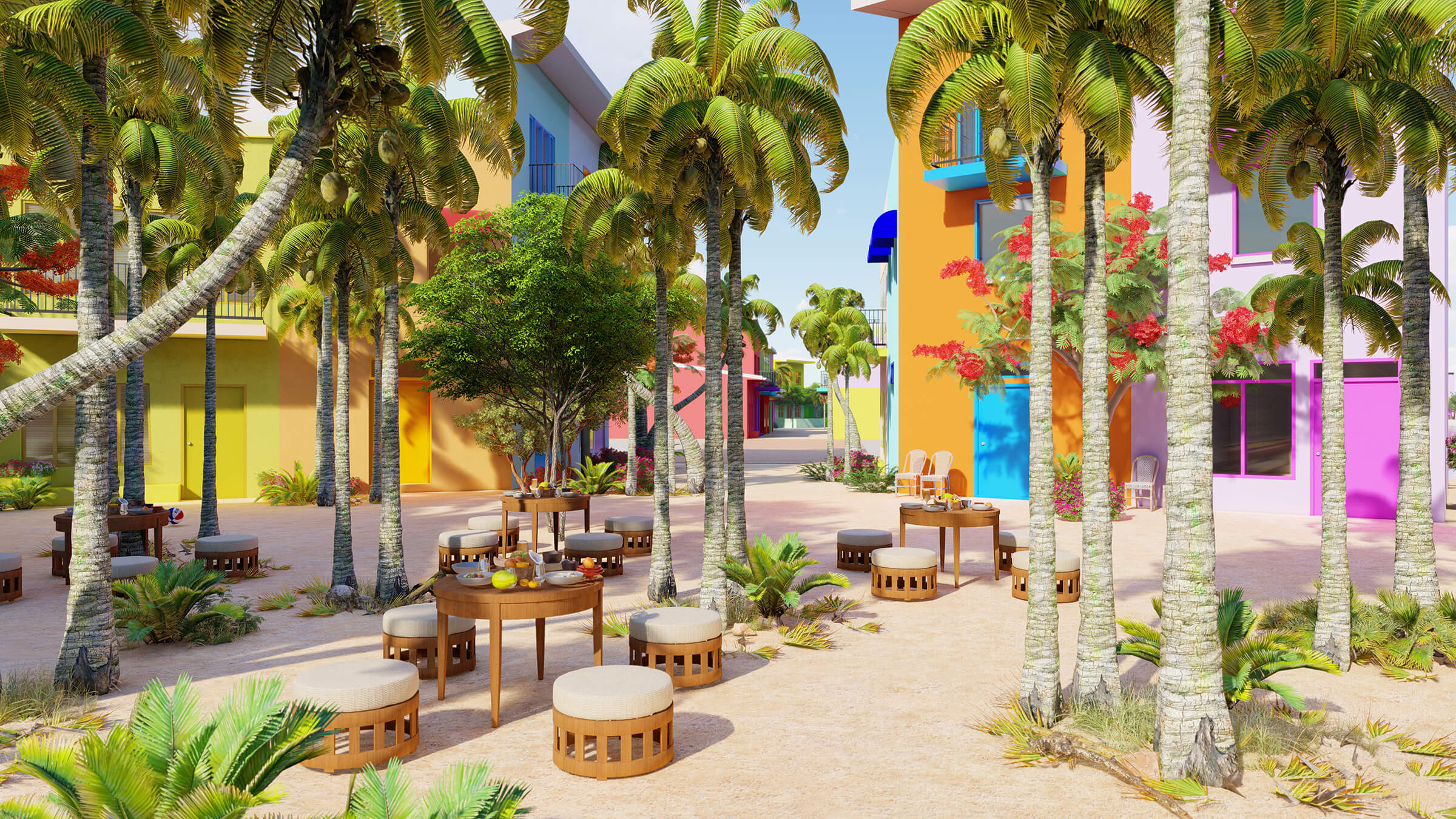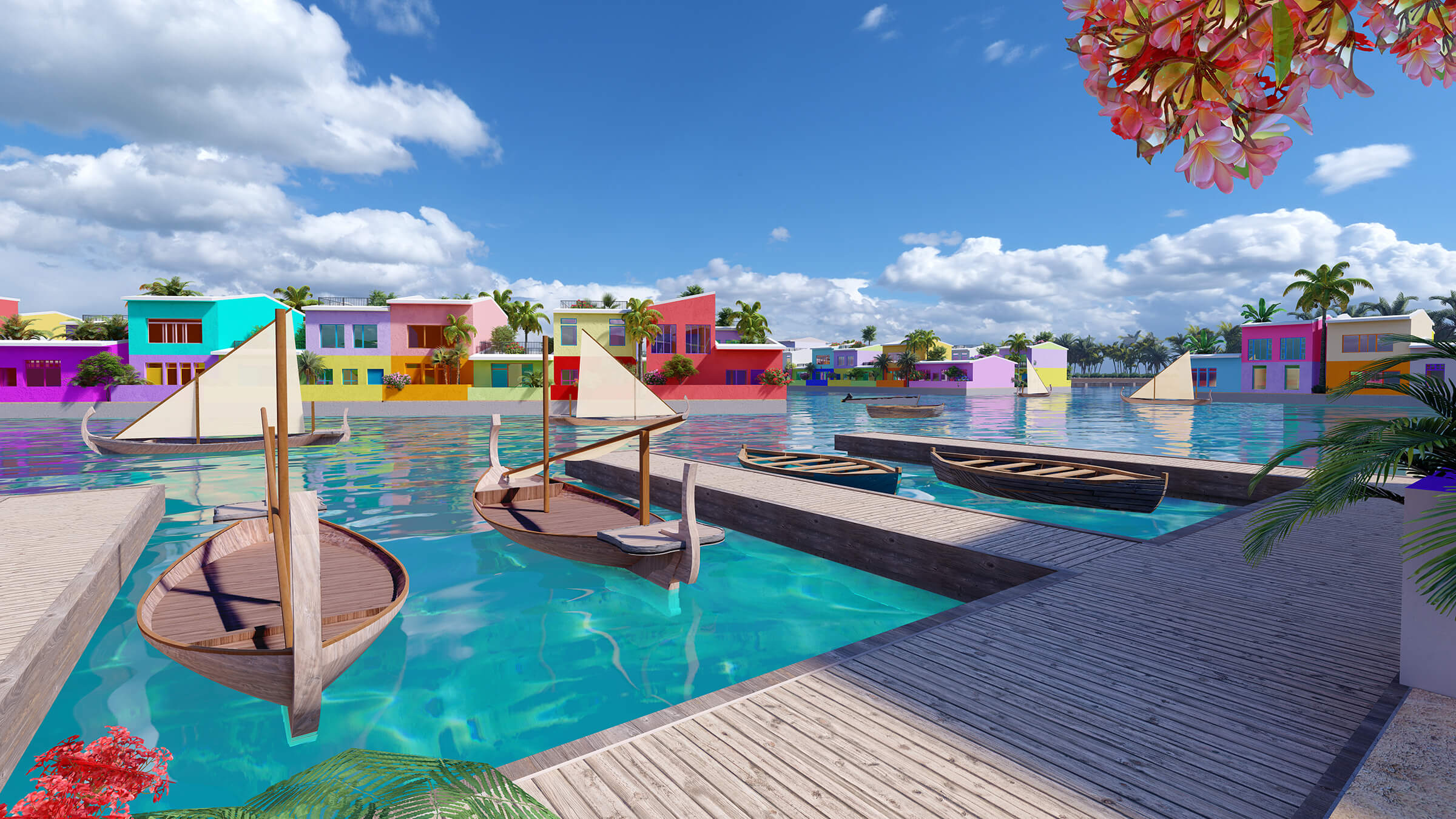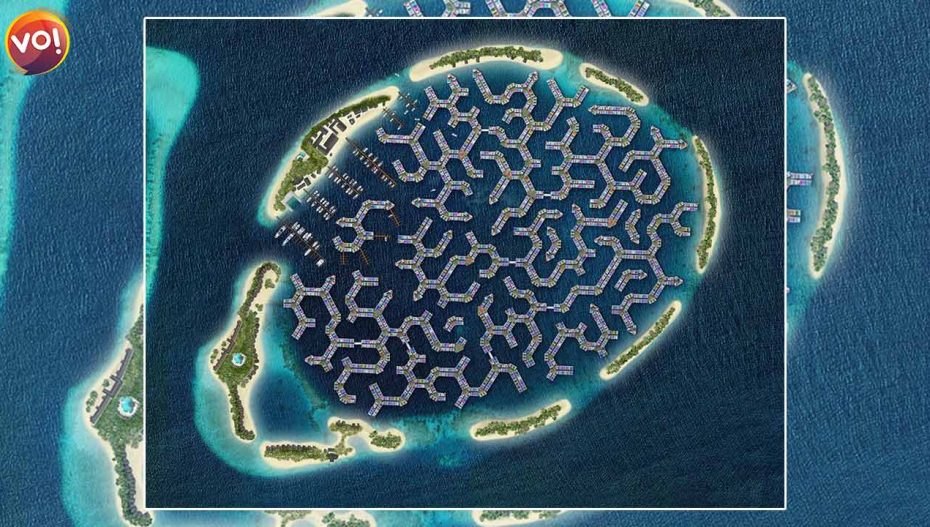The Maldives has generally been an ideal tropical escape, and this was especially true during the pandemic. Last year, with 1.3 million travellers, tourism almost returned to the pre-pandemic status, compared to 1.7 million travellers in 2019. And now that sea levels are rising, the country with the lowest global elevation might have a solid solution. The Maldives Floating City, a newly approved project for construction, plans to house 5,000 units linked and tethered to the floor of a 500-acre lagoon. The project aims to conserve and enrich the region’s natural and cultural ecosystem.

All about the Maldives Floating City
The project, centred on an integrated tourism model, located 15 minutes by boat from Malé and the international airport, will have hotels, homes, stores, and restaurants. It will be a car-free area where one can only travel on foot or by bicycle, electric, noise-free buggies, scooters, and on the natural white sand roads and canals.
The option of acquiring a residence permit and a home purchase is also available to visitors abroad. For people to understand how the homes will appear and feel, Bison will ship the first floating housing block to the lagoon and open it to the public for viewing in August.
The construction of the modular metropolis is to begin in January 2023 and take around five years for completion.
Private-public cooperation between Dutch Docklands and the island’s government has resulted in The Maldives Floating City.
Koen Olthuis, an architect, and Paul van de Camp, a developer, are the project’s founders. Dutch Docklands depends on floating technology from the Netherlands, which has a centuries-old history of creating buildings to survive floods.

Is it climate-proof?
At the 2022 MIPIM Awards, also known as the Asian Oscars for global development, the design by architect firm Waterstudio was a finalist for the Best Futura Project award. Supply and waste management, excess energy in the smart grid, and the shadows that its large structure would cast on the seabed that might hamper marine life were just a few factors that influenced the design and urban planning. Another critical factor was the projection of sea-rise levels over 100 years.
According to the website, the city is a “nature-based structure of roads and water canals resembling the beautiful, and efficient way in which real brain coral is organised.” It will also encourage coral growth by binding artificial coral banks to its underside, acting as a natural wave-reduction breaker.
As a sustainable option, floating architecture is becoming more popular due to the threat of climate change.
Recent innovations include the floating neighbourhood of Waterbuurt in Amsterdam, Copenhagen’s Hotel CPH Living, and France’s Off Paris Seine. Traditional examples include Lake Titicaca’s naturally occurring reed islands and the artificial aquaculture ponds shaped from floating vegetation in Manipur.
If everything goes according to plan, the first floating city will be seen in 2027.
Read also: From Petty Inner Struggles To Biggest Arguments: Conflictorium Has It All













